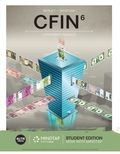
Marginal Cost of Capital (MCC) is the weighted average cost of capital for the last dollar raised in new capital. MCC of the company remains constant for some time after which it increases. This depends on the amount of additional capital raised and eventually increases as the cost of raising new capital is higher due to flotation cost. This is mostly evident in case of
Marginal cost of capital is calculated as below:
Proportion of debt in the target capital structure “
Proportion of
Proportion of common equity in the target capital structure “
After tax cost of debt, preferred stock, retained earnings and new equity is “
Breakpoint is the value of the new capital that can be raised just before an increase in the firm’s weighted average cost of capital.
Investment Opportunity Schedule (IOS) is then created to show how much money a company can invest in at different rates of return (IRR), this schedule is then merged with MCC schedule. The cost of capital at the intersection of both the schedules is the optimal cost of capital, which is used to find out the right mix of financing and therefore, the investment will be optimal. Hence, Optimal Capital Budget is that level of capital at which the marginal cost of capital is equal to the marginal revenues.
The company is evaluating a project to increase its sales. The cost of the project is $2.6 million with an IRR of 9.50%. Any portion of the project can be purchased. The company expects to raise up to $420,000 in new debt at a cost of 5% and anything above this at a cost of 7%. Similarly, it expects retained earnings of $1.3 million this year, with cost of retained earnings beingn12% and cost of any new common equity being 14%. Target capital structure is 35% debt and 65% equity. Marginal tax rate is 40%.
Want to see the full answer?
Check out a sample textbook solution
- Alfa international paid $2.00 annual dividend on common stock and promises that the dividend will grow by 4% per year, if the stock’s market price for today is $20, what is required rate of return?arrow_forwardgive answer general accounting.arrow_forwardGive me answers in general financearrow_forward
- General Finance Question Solution Please with calculationarrow_forwardGeneral Financearrow_forwardAs CFO for Everything.Com, you are shopping for 6,000 square feet of usable office space for 25 of your employees in Center City, USA. A leasing broker shows you space in Apex Atrium, a 10-story multitenanted office building. This building contains 360,000 square feet of gross building area. A total of 54,000 square feet is interior space and is nonrentable. The nonrentable space consists of areas contained in the basement, elevator core, and other mechanical and structural components. An additional 36,000 square feet of common area is the lobby area usable by all tenants. The 6,000 square feet of usable area that you are looking for is on the seventh floor, which contains 33,600 square feet of rentable area, and is leased by other tenants who occupy a combined total of 24,000 square feet of usable space. The leasing broker indicated that base rents will be $30 per square foot of rentable area Required: a. Calculate total rentable area in the building as though it would be rented to…arrow_forward
- Don't used Ai solutionarrow_forwardGeneral Finance Questionarrow_forwardConsider the following simplified financial statements for the Yoo Corporation (assuming no income taxes): Income Statement Balance Sheet Sales Costs $ 40,000 Assets 34,160 $26,000 Debt Equity $ 7,000 19,000 Net income $ 5,840 Total $26,000 Total $26,000 The company has predicted a sales increase of 20 percent. Assume Yoo pays out half of net income in the form of a cash dividend. Costs and assets vary with sales, but debt and equity do not. Prepare the pro forma statements. (Input all amounts as positive values. Do not round intermediate calculations and round your answers to the nearest whole dollar amount.) Pro forma income statement Sales Costs $ 48000 40992 Assets $ 31200 Pro forma balance sheet Debt 7000 Equity 19000 Net income $ 7008 Total $ 31200 Total 30304 What is the external financing needed? (Do not round intermediate calculations. Negative amount should be indicated by a minus sign.) External financing needed $ 896arrow_forward
- An insurance company has liabilities of £7 million due in 10 years' time and £9 million due in 17 years' time. The assets of the company consist of two zero-coupon bonds, one paying £X million in 7 years' time and the other paying £Y million in 20 years' time. The current interest rate is 6% per annum effective. Find the nominal value of X (i.e. the amount, IN MILLIONS, that bond X pays in 7 year's time) such that the first two conditions for Redington's theory of immunisation are satisfied. Express your answer to THREE DECIMAL PLACES.arrow_forwardAn individual is investing in a market where spot rates and forward rates apply. In this market, if at time t=0 he agrees to invest £5.3 for two years, he will receive £7.4 at time t=2 years. Alternatively, if at time t=0 he agrees to invest £5.3 at time t=1 for either one year or two years, he will receive £7.5 or £7.3 at times t=2 and t=3, respectively. Calculate the price per £5,000 nominal that the individual should pay for a fixed-interest bond bearing annual interest of 6.6% and is redeemable after 3 years at 110%. State your answer at 2 decimal places.arrow_forwardThe one-year forward rates of interest, f+, are given by: . fo = 5.06%, f₁ = 6.38%, and f2 = 5.73%. Calculate, to 4 decimal places (in percentages), the three-year par yield.arrow_forward
 EBK CONTEMPORARY FINANCIAL MANAGEMENTFinanceISBN:9781337514835Author:MOYERPublisher:CENGAGE LEARNING - CONSIGNMENT
EBK CONTEMPORARY FINANCIAL MANAGEMENTFinanceISBN:9781337514835Author:MOYERPublisher:CENGAGE LEARNING - CONSIGNMENT
